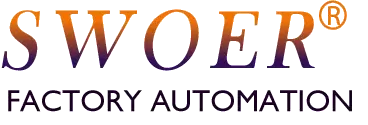The function of “vibrating feeder with camera” is a very cutting-edge and practical technological upgrade. It is commonly referred to as a “visual selection vibration feeder”, “visual positioning vibration feeder”, or “CCD visual inspection vibration feeder”. This is no longer a simple sorting and feeding process, but has evolved into an intelligent workstation that integrates detection, recognition, positioning, and screening.
Its core functions can be summarized as follows:
1、 Core function: A leap from sorting to “decision-making”
Accurate posture recognition and positioning
Function description: The camera is located at the exit of the vibrating feeder or above the track, and quickly takes photos of every part passing by. By using image processing software, accurately identify the orientation information such as the front and back, angle, and direction of the parts.
Addressing pain points: Traditional vibration feeders cannot achieve 100% sorting accuracy for parts with extremely similar shapes or extremely demanding directional requirements (such as small chamfers, specific heavy surfaces). The visual system can compensate for this deficiency.
Real time quality inspection and removal of defective products
Function description: The visual system can preset image parameters for standard parts, such as size, shape, color, and presence of defects. When the parts pass by, the system will compare them with the standard template.
Testing content:
Dimensional defects: whether the parts are too large, too small, or have burrs.
Appearance defects: whether there are scratches, dents, rust spots, stains.
Assembly integrity: such as whether the injection molded parts are missing materials and whether the screws are missing gaskets.
Mixing detection: whether different types of parts are mixed in.
Execution action: Once a defective product is found, the system will immediately send a signal and remove it from the production line through a removal device (such as a blowing nozzle, push rod, baffle, etc.).
Precise positioning and robot grasping coordination
Function description: This is the highest level application. The camera not only recognizes the posture of the parts, but also accurately calculates the position (X, Y) and rotation angle (θ) of the parts in the coordinate system, and sends these coordinate data in real time to downstream robots (robotic arms).
Workflow: The vibrating feeder sends the parts to a designated platform → The visual camera takes photos and locates them → The coordinate data is sent to the robot → The robot grasps the parts based on accurate position and angle information and assembles them.
Advantages: Solved the problem of inaccurate positioning caused by robot “blind grasping”, greatly improving the accuracy and reliability of automated assembly.
2、 System composition
A complete visual selection vibrating feeder typically includes:
Vibration disk body: responsible for sorting and transporting parts to the inspection area.
Industrial camera: used to capture images of parts.
Light source: a crucial component that provides stable and uniform illumination, ensuring clear images, distinct features, and reducing misjudgments.
Visual processing system: including image processing software and hardware (such as industrial computers or embedded visual controllers), responsible for analyzing images and making judgments.
Execution mechanism: such as solenoid valve controlled blowing nozzle, cylinder push rod, etc., responsible for removing defective products or assisting in positioning according to the instructions of the visual system.
In summary, installing a camera on the vibrating feeder is a key step in achieving high-precision and fully automated production in modern smart factories, as it upgrades it from a simple “sorting and feeding” device to an intelligent quality control terminal with “eyes and brains”.
